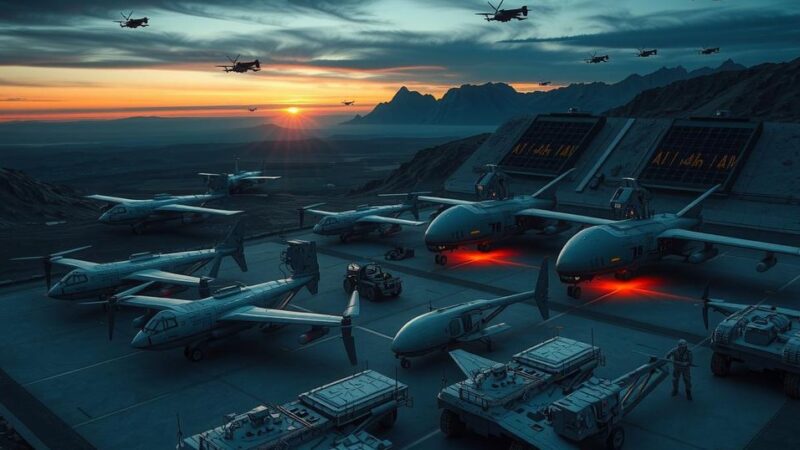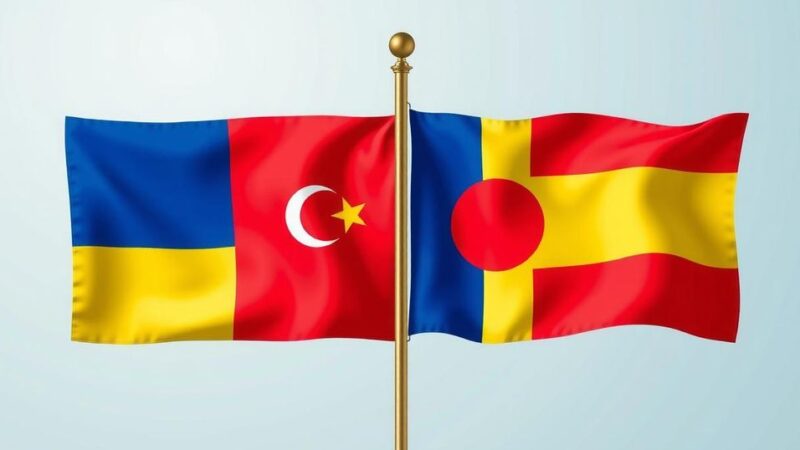The Syrian Army has launched a military offensive to dislodge Hezbollah militants from strategic border regions with Lebanon. Heavy fighting has erupted, resulting in casualties on both sides. There has been increased coordination between Syrian and Lebanese forces, marking a shift in Syria’s approach to Iranian influence under President Ahmed al-Sharaa. This situation challenges Iran’s regional ambitions and indicates potential fractures within the Iran-led alliance.
The Syrian Army has commenced a significant military offensive aimed at expelling Iranian regime-supported Hezbollah militants from critical border regions adjacent to Lebanon. This operation marks a notable increase in tensions between Damascus and Tehran’s proxies, with reports highlighting casualty numbers from both parties. The escalated conflict has prompted tighter security collaboration between Syrian and Lebanese forces against Hezbollah’s actions.
Heavy fighting is ongoing in Hosh Al-Sayyid Ali, a pivotal town controlled by Hezbollah since 2013. Reports indicate that the Syrian army has initiated an extensive artillery and missile bombardment targeting Hezbollah positions. A representative from the Syrian defense ministry stated that the goal is to completely regain control of this town and secure its borders from Hezbollah-related operations involving smuggling and armament trafficking.
The cooperation between the Syrian military and Lebanese forces has been confirmed by a Ministry of Defense official, indicating that the Lebanese Army is actively countering Hezbollah’s aggressive actions. A Lebanese military source reported that forces have been instructed to retaliate against any assault originating from Syrian territory, highlighting the growing discontent with Hezbollah even among its former allies.
Despite Hezbollah’s attempts to resist, including rocket strikes on Syrian positions near Homs, the Syrian Army has intensified its responses, leading to retreats in several areas held by Hezbollah. Recent reports indicate that Hezbollah has incurred considerable casualties, amounting to approximately 12 Hezbollah fighters and 8 Syrian soldiers lost in ongoing confrontations.
These clashes represent a transformative moment in Syria’s approach to Iranian influence. The newly appointed Syrian leadership under Ahmed al-Sharaa is decisively confronting Tehran’s grip. Syrian officials emphasize their commitment to reestablishing full control over national borders and curbing Hezbollah’s unauthorized activities, indicating a desire to restore sovereignty and limit external interference.
This conflict threatens the broader ambitions of Iran within the region, as any loss of Hezbollah’s territory in Syria would impair Tehran’s capability to uphold its so-called “Axis of Resistance” against Western and Arab antagonists. Moreover, military setbacks for Hezbollah may invigorate internal opposition in Lebanon, further undermining Iranian influence therein.
As the situation evolves, it emphasizes a widening divide within the Iran-led coalition, as Damascus appears to prioritize its national interests over Tehran’s expansionist goals. With military pressure mounting from both Syrian and Lebanese fronts, Hezbollah finds itself in an increasingly precarious position, potentially signaling a decline in Iran’s unchallenged authority within Syria.
In conclusion, the situation at the Lebanon-Syria border illustrates a marked shift in Syria’s policy stance towards Iranian influence, characterized by the Syrian Army’s military offensive against Hezbollah. The collaboration between Syrian forces and the Lebanese Army denotes an urgent response to the heightened aggressiveness of Hezbollah, indicating significant potential ramifications for Iran’s regional dominance. The ongoing confrontations underscore a fracturing within the Iran-led alliance, as Damascus asserts its national sovereignty, suggesting a future where Iranian influence may be challenged and curtailed.
Original Source: www.ncr-iran.org






